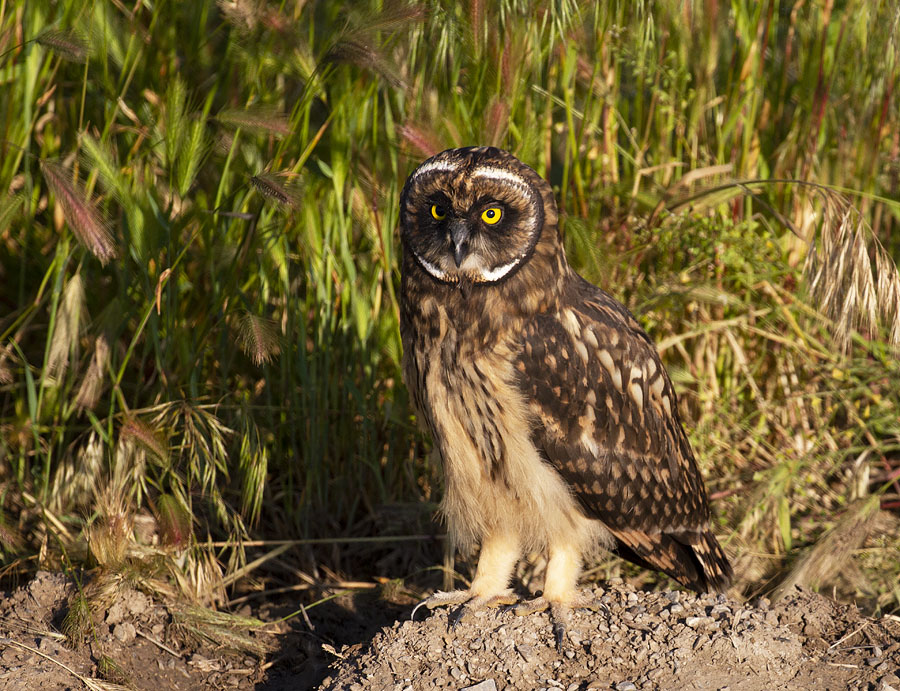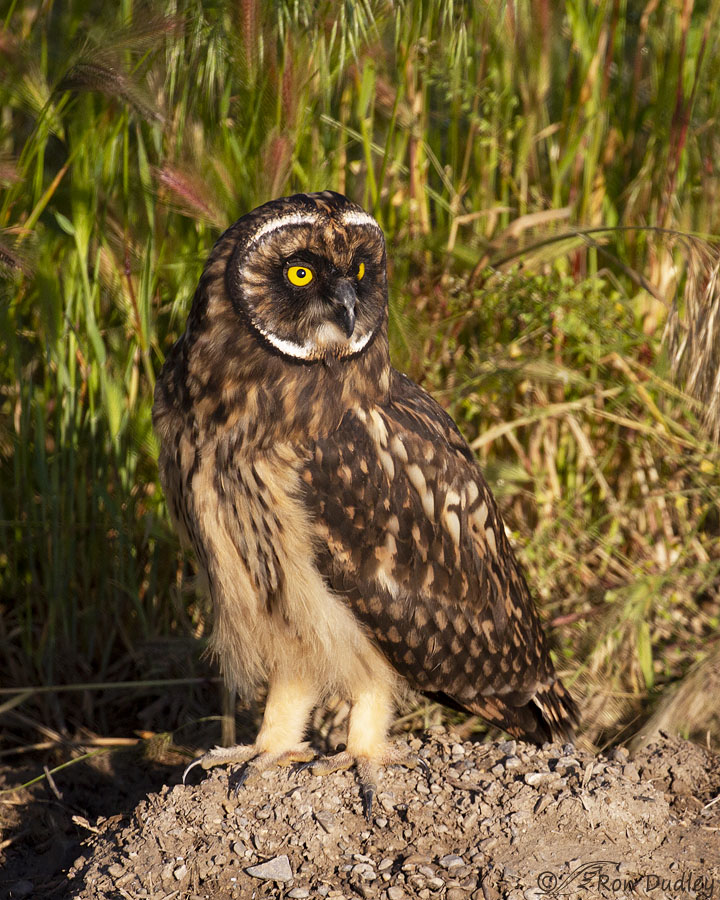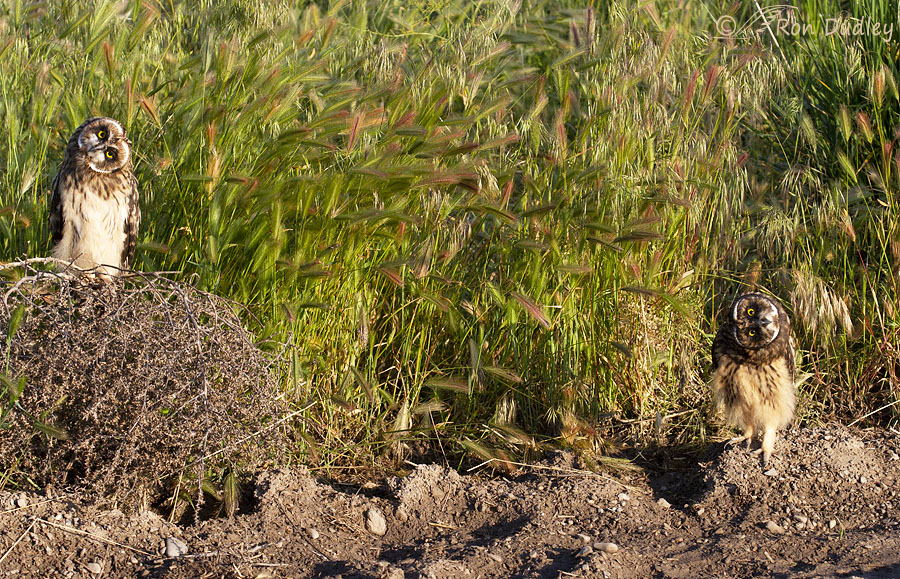This youngster immediately stood out.
I’ve posted a couple of other photos of this owl in the past but these three are new to my blog.

1/1250, f/7.1, ISO 400, Canon 7D, Canon EF 100-400mm f/4.5-5.6L IS II USM @ 400mm, not baited, set up or called in
Five years ago this month I found two young Short-eared Owl siblings next to a road in a fairly remote area of northern Utah. Over the years I’ve seen and photographed quite a few young SEOW’s but this one immediately caught my eye because of ‘his’ unusually dark coloring, around his eyes and face in particular but elsewhere in his plumage too.

1/1600, f/7.1, ISO 400, Canon 7D, Canon EF 100-400mm f/4.5-5.6L IS II USM @ 400mm, not baited, set up or called in
Such a dark bird against a fairly dark background doesn’t stand out very well so I cropped this photo pretty tight on the owl. I love the way his bright yellow eyes pop out of the blacks of his facial disc.

1/800, f/8, ISO 400, Canon 7D, Canon EF 100-400mm f/4.5-5.6L IS II USM @ 164mm, not baited, set up or called in
I backed off my smaller zoom lens to 164mm so I could get both youngsters in the frame for comparison. Here both owls are parallaxing my pickup, probably because of camera shutter sounds. Cute little rascals aren’t they.
The owl on the left looks like virtually all other young SEOW’s I’ve seen but his sibling’s darker coloration is unique in my experience. For folks who have never before seen SEOW youngsters this age the difference in coloration between the two may not seem dramatic but that’s almost the first thing I noticed when I pulled up next to them in my pickup.
Normally I would never, ever get this close to young owls but these two were right on the edge of the road so I had no practical choice but to get close. Besides, I actually wanted to shoo them back into the dense vegetation behind them so they had less chance of ending up as road kill. But even with me only a few feet away they were calm and trusting and they held their ground. It was very early in the morning and that time of day there was no traffic on the road to speak of so I left them in place to look for other birds and hoped for the best.
When I returned a couple of hours later they were gone. I hope they’re still out there somewhere and this time of year I also hope they’re making babies.
Ron


Owls. Young ‘uns. Paralaxing young ‘uns. It doesn’t get much better than that.
I share your hope that somewhere they are thriving, and that there are several more generations of these charmers.
EC, if they are thriving you couldn’t prove it by me. For whatever reason I’m just not seeing SEOW’s anymore…
I gathered as much from your comments and really, really hope that they are doing well somewhere.
Those head turns really are hella cute. You can almost feel the intensity of their curiousity.
Thanks, Arwen.
Parallaxing youngsters always make me smile. You definitely have a knack for finding dark morphs.
You definitely have a knack for finding dark morphs.
I feel like it’s been a long time since you’ve posted “in real time” Shortie photographs, although I could be mistaken (it’s happened before once or twice ). I hope that they’re just finding other spots to hang out, but I get worried that the real reason is more depressing.
). I hope that they’re just finding other spots to hang out, but I get worried that the real reason is more depressing.
It has been a long time, Marty – far too long. I know they’re nomadic but I’m still worried about them.
Stunning photos! I love the way they can turn their heads.
So do I. Thanks, Cindy.
The side-by-side comparison really accentuates the difference. It may just be the light, but the dark one’s beak seems darker, as well. The Salsola (tumbleweed) is an amusing, albeit invasive perch.
You may be right about the color of their respective beaks, Lyle. I hadn’t noticed. I’ll have to go back and look at other photos to confirm. Or not.
OK, I looked at closeup photos of both birds to compare their beak color. They’re both the same shade of deep black. In the photo above I think the beak of the bird on the left looks lighter because of light reflection off the top of its beak.
Good Saturday morning Ron. I have never seen a Short-eared Owl so I have always enjoyed the ones you have shown us. Yes, these look much darker than any previously shown. Actually very handsome birds. That white circle around the face combined with those piercing bright eyes makes for some excellent photos. Of course the photographer’s skill helps too.
Thanks, Everett. Truth be told these guys were extremely cooperative so it didn’t require all that much skill.
“Cute little rascals” is exactly right. The second photo will see me coming back again and again to study all the detail. Beautiful.
So much going on here i haven’t been able to keep up with your posts, or anything, for that matter. I hope all is well out there.
Nina, not being able to “keep up” with anything is a syndrome I’ve been experiencing myself lately. Hopefully things will settle down soon but at the moment I’m not particularly optimistic.
He’s a beauty! Lots of contrast with the face ring and those golden eyes.
Lots of contrast with the face ring and those golden eyes.
I’ve never seen one that dark tho haven’t seen all that many – only in one field where we’d watch for them and “bambi’s” while working in the spring.
Judy, I’m not seeing SEOW’s, adults or youngsters, as often as I used to. That concerns me.